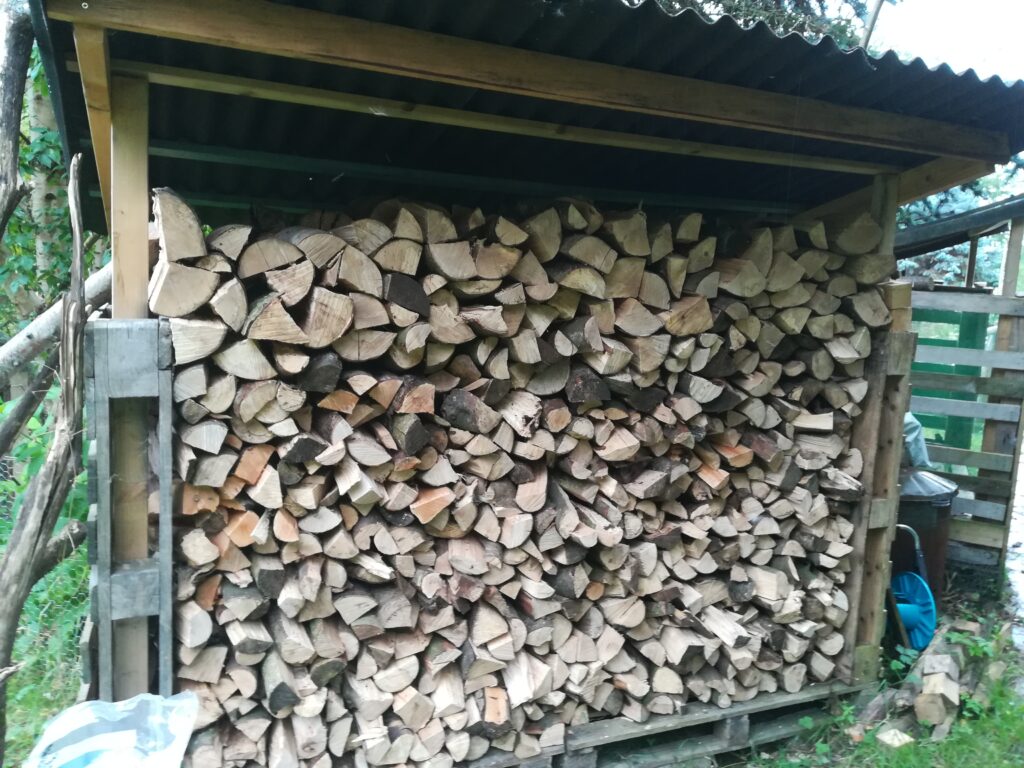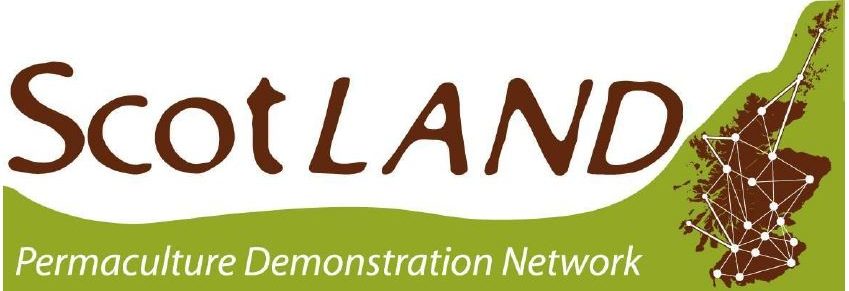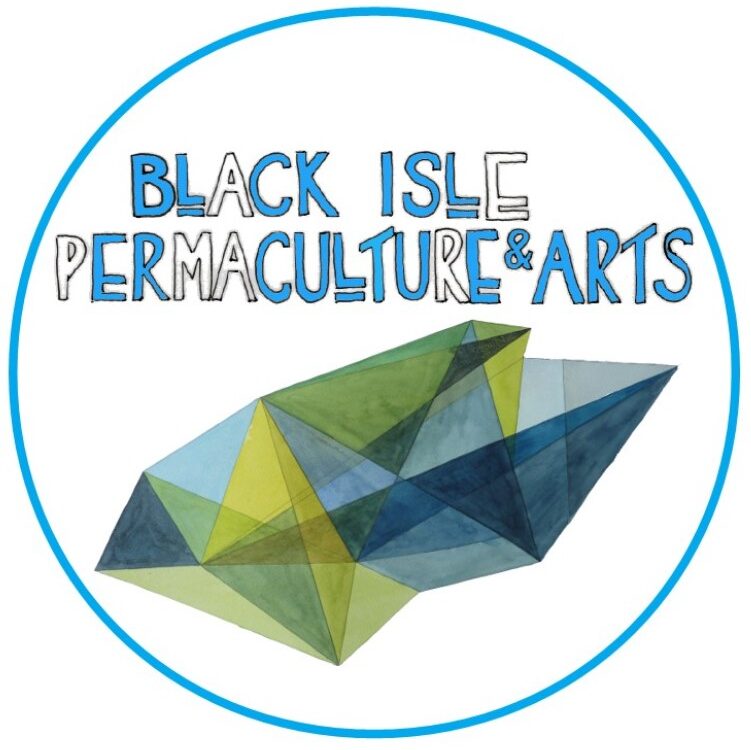Permaculture is an innovative framework for creating sustainable ways of living. It is a practical method of developing ecologically harmonious, efficient and productive systems that can be used by anyone, anywhere. By thinking carefully about the way we use our resources – food, energy, shelter and other material and non-material needs – it is possible to get much more out of life by using less. We can be more productive for less effort, reaping benefits for our environment and ourselves, for now and for generations to come. This is the essence of permaculture – the design of an ecologically sound way of living – in our households, gardens, communities and businesses. It is created by cooperating with nature and caring for the earth and its people. Permaculture is about living lightly on the planet, and making sure that we can sustain our activities for generations to come, in harmony with nature. It means understanding that we are all a part of Earth’s ecosystem and not outside of it, having a less anthropocentric world-view and being conscious that each of our actions and decisions, whether positive or negative, will affect that ecosystem.

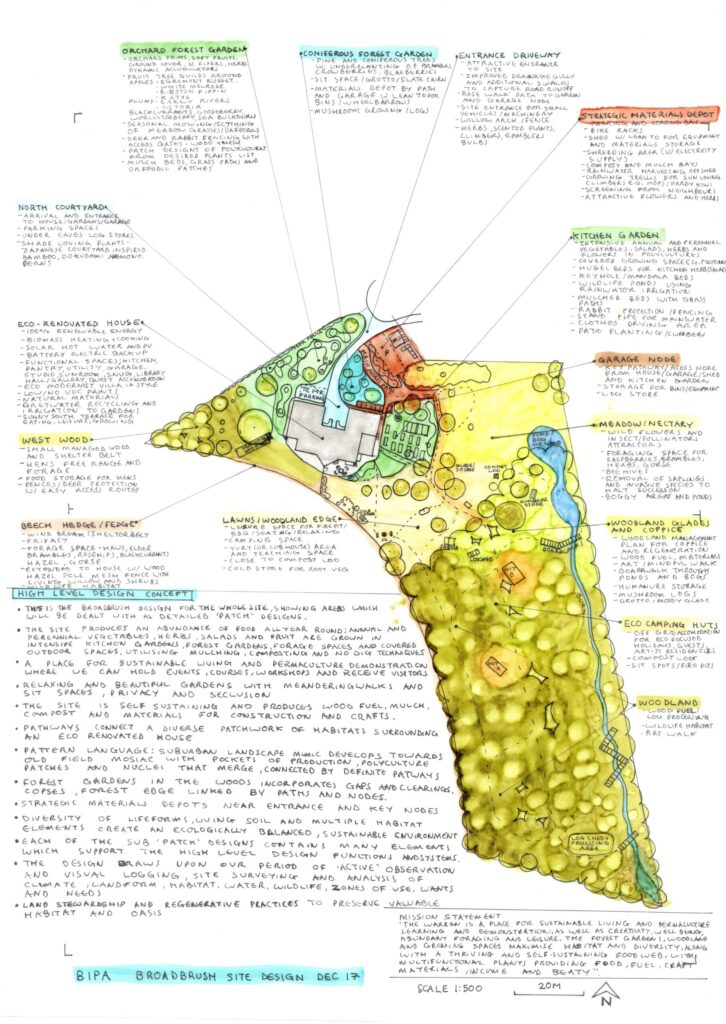

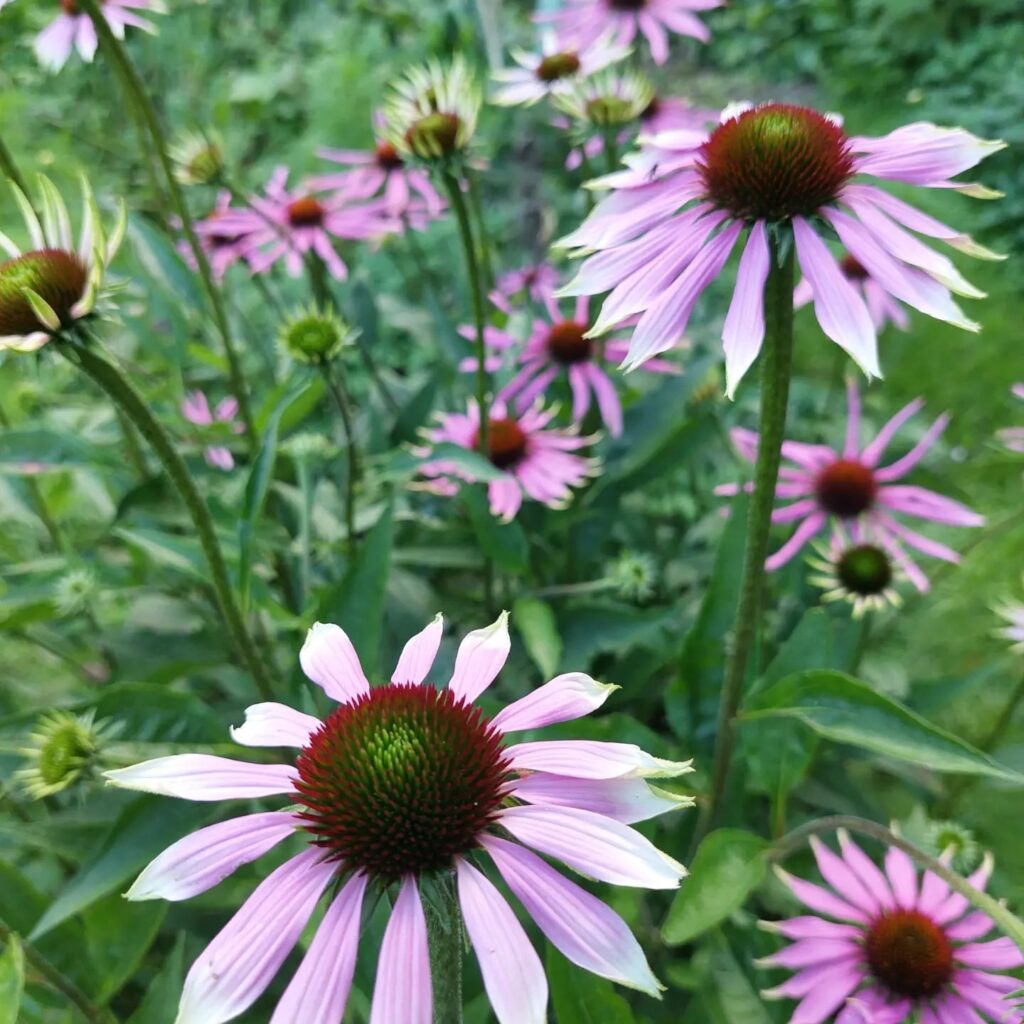
Permaculture provides a way to design human lifestyles that make a positive impact through our actions and lifestyles by combining three key aspects, which we are using to guide how we live:
- An ethical framework
- Understandings of how nature works
- A design approach
Many of the techniques and ways of working we use here are a shift in attitude from conventional agriculture or gardening, for example, active observation of ecosystems and foodwebs and making minimal intervention, slow solutions such as scything meadows seasonally rather than regular mowing, harnessing the beneficial properties of ‘weeds’ (nettles are a food crop) and at the same time reducing time spent weeding, shifting from maintenance to harvesting (grass is a harvest which is used to make compost), no dig gardening and soil/fertility building through mulching, planting of nitrogen fixers and dynamic accumulators, polycultures instead of monocultures and so on.
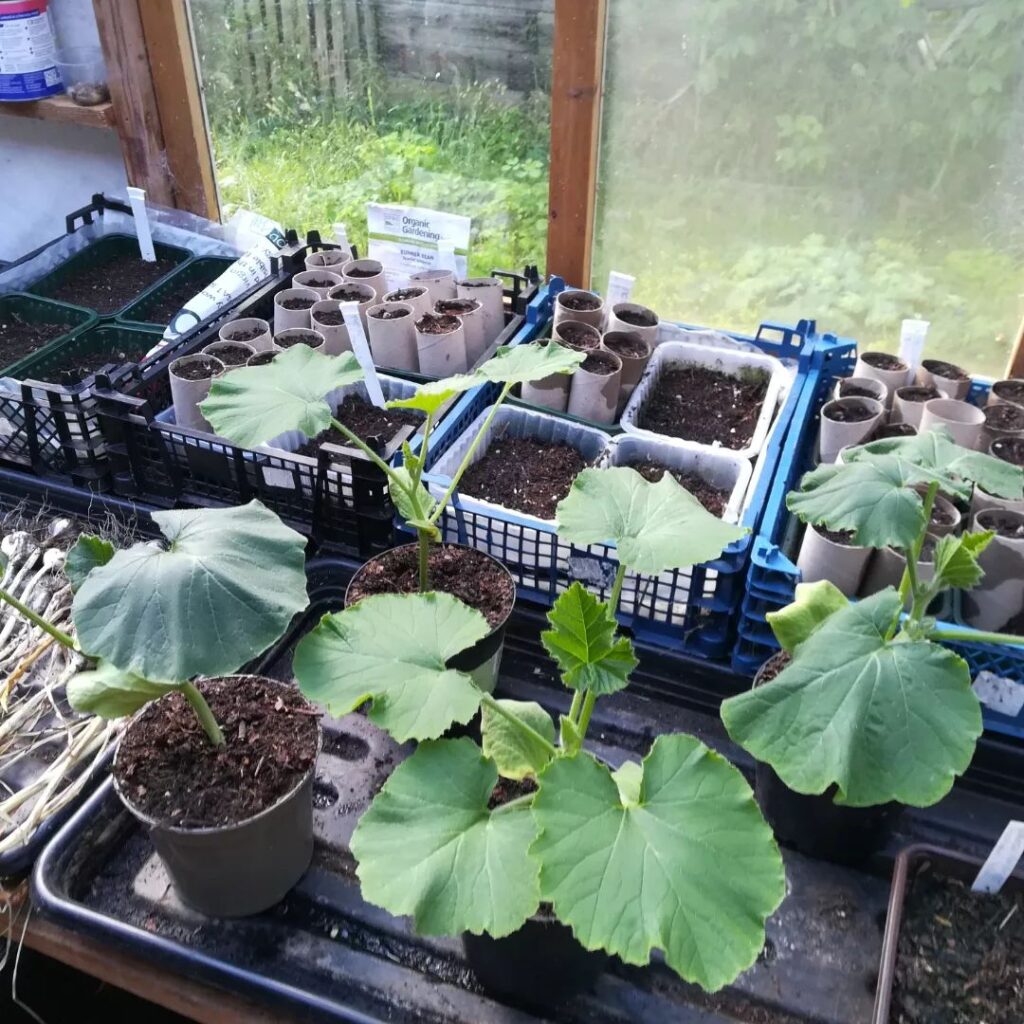
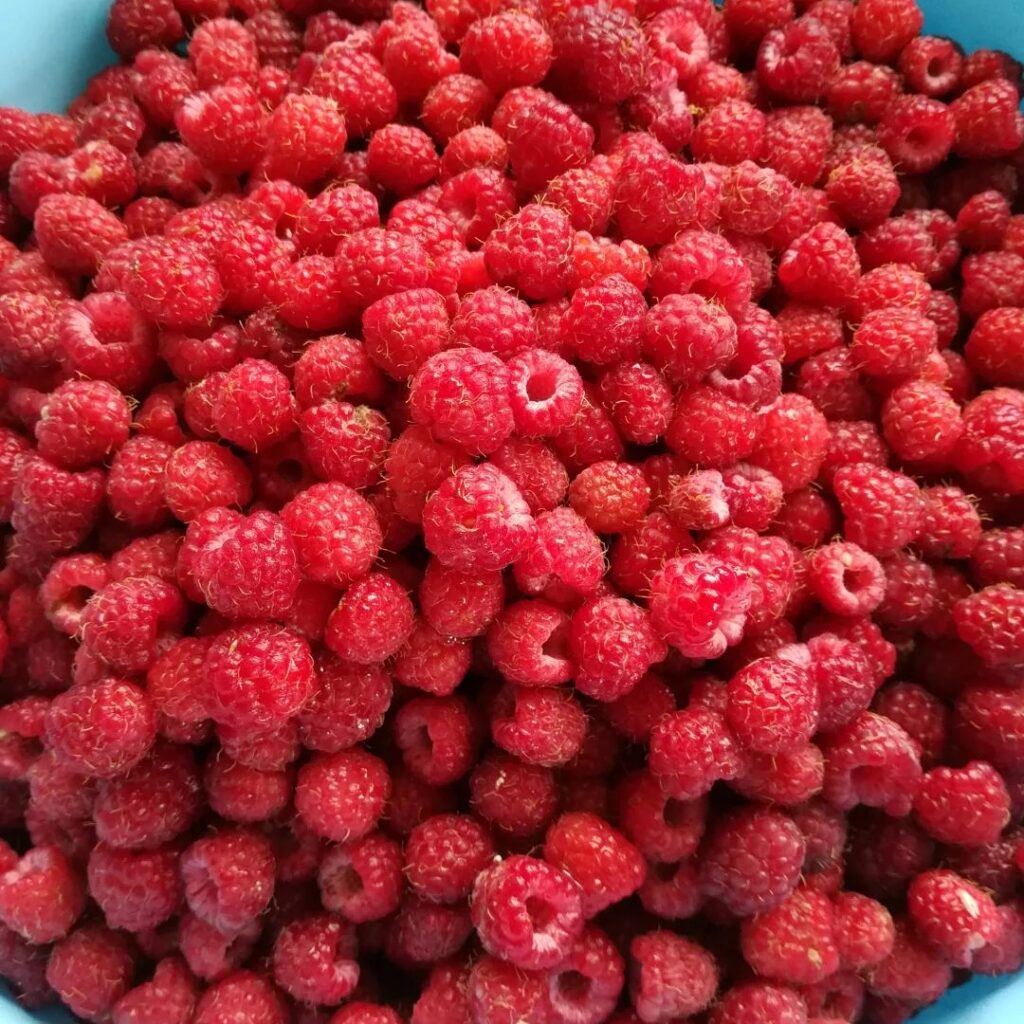
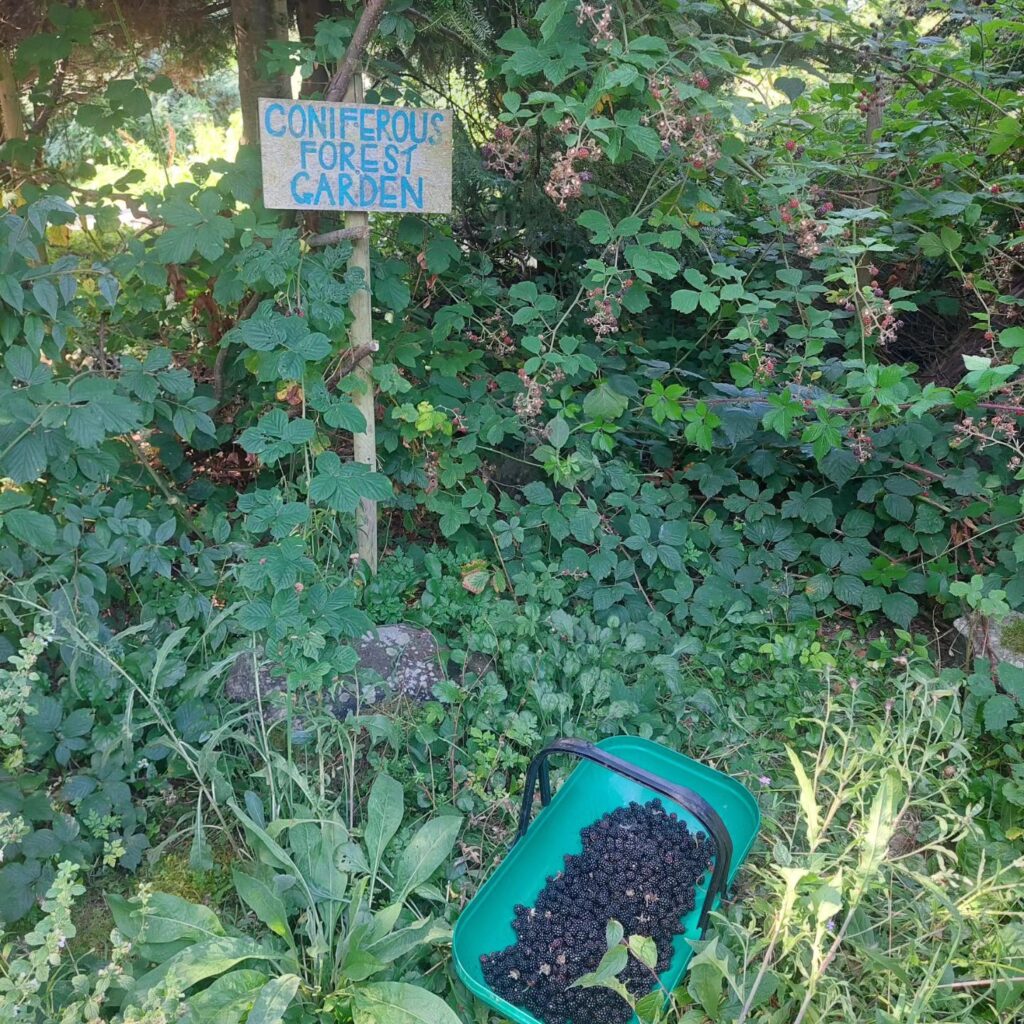
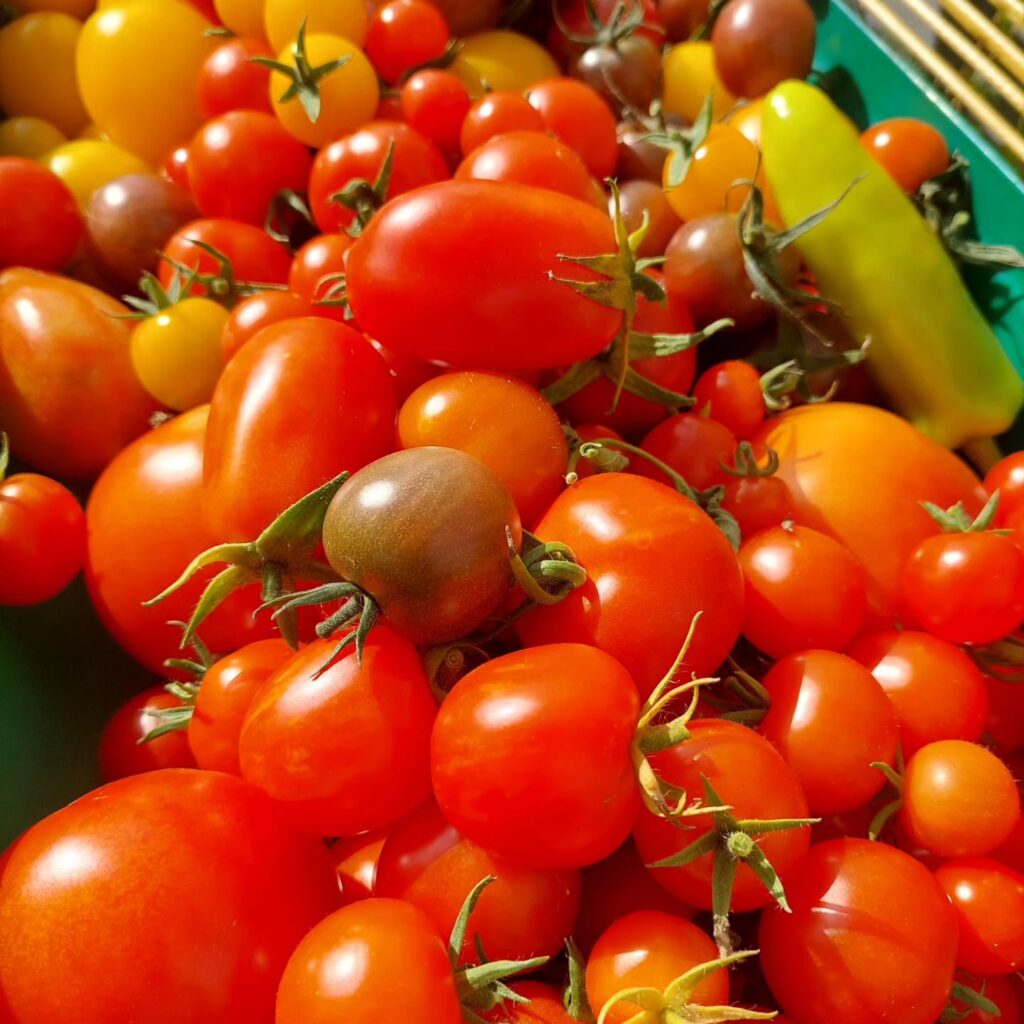
Our design and vision is to create forest gardens, woodland and growing spaces that maximise habitat and diversity, along with a thriving and self-sustaining food-web, with multifunctional plants providing food, fuel, materials, income, and beauty. The Warren is a place for sustainable living, creativity, well-being, abundant foraging, livelihood and leisure. An eco retrofitted house sits amongst a mosaic of habitats within healing and regenerative gardens and woodland. South facing growing spaces, terraces and house orientation maximise solar gain for energy generation, light and social areas. Forest garden, Bio intensive kitchen garden, Greenhouses, meadows, rewilded and functional spaces radiate from the house towards the boundaries, using zoning in relation to the house and landscape. The various areas of the garden and house have all been designed with Permaculture processes to create a functional, integrated system which supports the community of living things and activities within.
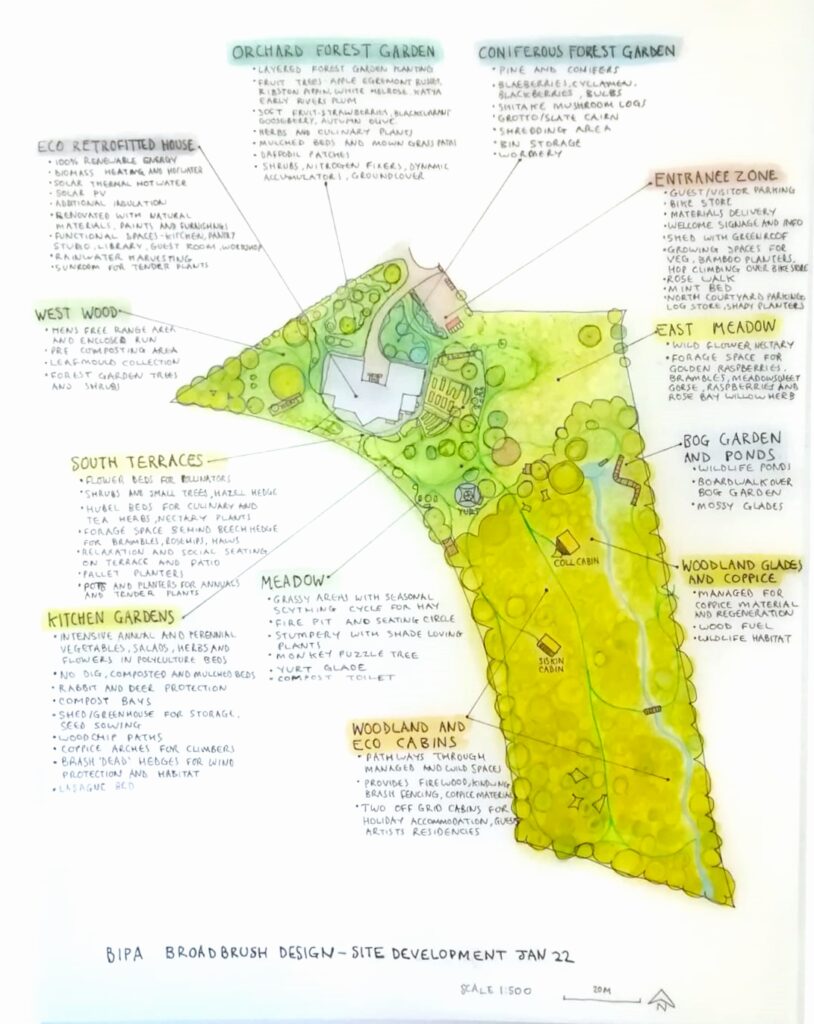
BROADBRUSH DESIGN
This is the layout of the whole 2.5 acre site showing the various areas that make up the mosaic of habitats. Our original ‘broadbrush design was completed in 2017, and this drawing shows the development of the design up to January 2022. We used David Jacke’s Ecological Design Process which is outlined in Edible Forest Gardens, Vol 2, p 232. The design is for the 2.59 acre plot (1.05 hectares), 87m above sea level at its highest point, sloping down to 72m. While the whole site was designed holistically, its broken down into different areas, shown below.
ORCHARD FOREST GARDEN
The Orchard Forest Garden is situated on the north aspect of the garden, but is an open sunny spot sloping towards the south in Zone 2. The primary function for this area was to produce a yield of fruit, herbs, salads and flowers for us, birds and insects. We also wanted to reduce the amount of lawn and inputs of maintenance/time/labour as well as improving soil health, biodiversity and creating an attractive entrance to the site. We have used the forest garden layers of dwarf fruit trees, shrubs, herbs, perennials, groundcover, nitrogen fixers and dynamic accumulators. There are apple and plum trees, then planted around these in ‘guilds’ or collections of plants, are gooseberries, blackcurrants, red and whitecurrants, autumn olives, sea buckthorn, serviceberry, juneberry, tree lupin, szechuan pepper, liquorice, apple mint, clary sage, bergamot, calendula, comfrey, echinacea, lemon balm, horseradish, yarrow, sweet cicely, strawberry, hyssop, good king henry, sage, salad burnet, crimson clover, dandelion, sorrel, chives, sweet violet, daffodil, honeysuckle and everlasting sweet pea to name some but not all the plants! The beds are created by mulching with cardboard and woodchip on top, then planting into this, and the paths between are mown grass.
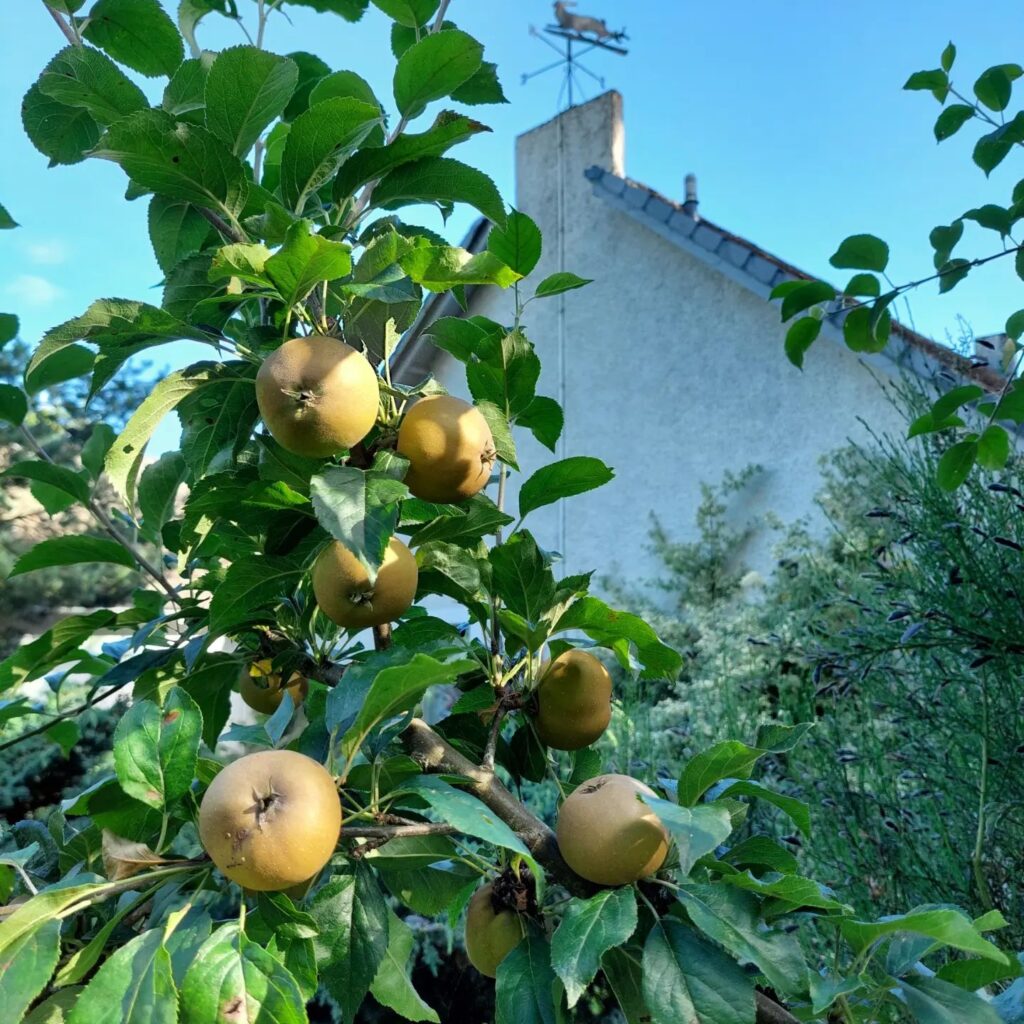
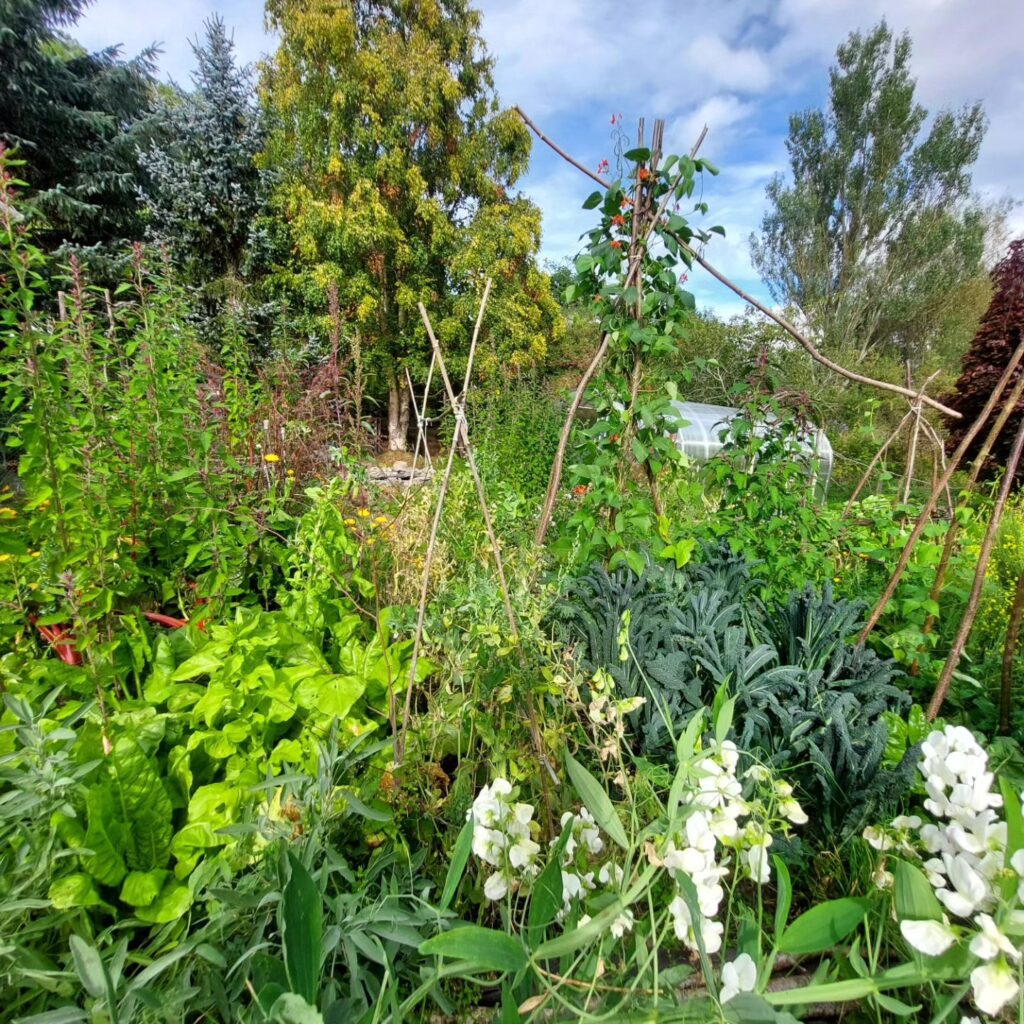
KITCHEN GARDENS
The Kitchen gardens are in Zone 1 immediately outside the doorways from the kitchen, sunroom and dining room, onto sloping south/east facing grassy areas. When we moved in they were all lawn but through mulching, creating raised beds, pathways, ‘lasagne’ sheet mulch beds, hugel beds and enclosed areas with brash fences we gradually improved the compacted soil and mono culture planting. Some areas are fenced off and have rabbit/deer protection. We have created poly-cultures (with both annual and perennial vegetables, salads, herbs and plants to attract pollinators and natural pest control), providing plant based food all year round. We grow a large variety of crops such as peas, beans, cabbage, kale, potatoes, chard, carrots, beets, onions, garlic, salad leaves and greens, Egyptian walking onions, Korean mint, thyme, sage, lovage, rhubarb, skirret, spignel, mashua, borage, calendula, and chives to name a few. This area is inspired by cottage and potager style kitchen gardens. At some point there will be a greenhouse and pond in the area!
CONIFEROUS FOREST GARDEN
This area is a densely planted bed on the north side of the plot, at the front of the house and adjacent to the entrance driveway (Zone 2). There is a mixture of firs, pine (including what we think is a Korean pine), conifers, a large Sitka spruce, juniper, hebe, rose, honeysuckle, foxgloves and brambles which have scrambled upwards for light, plus sedum on the west side which is slightly more sunny in summer afternoons. On the eastern tip there is broom, a mahonia and vetch, and this area gets a bit more morning sun. During our first year of observing the site we found it a very good forage spot for brambles [Observe and Interact]. Looking at the ‘woodland’ floor we realised that the build up of leaf mulch from the coniferous plants had created an acid soil which seemed close to the natural habitats of the Black Isle- such as Monadh Mor -(The Big Moor), a remnant of the extensive bog woodland which once covered the Black Isle ridge. On walks there we had seen pine and spruce with an under storey of wild blaeberries (bilberries) and brambles which we foraged. This gave us the idea of mimicking this habitat and creating a ‘coniferous forest garden’ [Design from patterns to details]. We wanted to create forage spaces (FUNCTION) in the garden so we can harvest fruit and mushrooms for eating [Obtain a yield], making into jams, cordials, syrups and wine [Catch and store energy] (SYSTEMS & ELEMENTS), and to utilise a difficult area to grow other plants/food in due to the shade and acidity so that it becomes another part of the edible garden [Integrate rather than segregate]. The design was for a minimal intervention approach which simply involved pruning some of the lower branches so we could access the whole area [Use small and slow solutions]. Within this we selected varieties of fruit to match the local and native species of Blaeberry (bilberry), Crowberry, and Bramble/blackberry. We have also added Shitake mushrooms on spores in beech logs, which so far have produced a fantastic crop!


SOUTH TERRACES
The sunny patios and slopes at the rear of the house are used as leisure spaces for sitting, eating, relaxing and growing spaces with flower and hugel beds which provide culinary and tea herbs, as well as nectary plants and cut flowers. Hyssop, caraway, thyme, chives, sweet peas, rudbeckia, lupins, foxgloves, clary sage, tarragon, vipers bugloss, snapdragons, pelargoniums, lavender, rosemary, sage, dill, calendula, wallflowers, tulips, echinacea, telkia and sweet violets are all grown in these sunny spots, providing food and beauty year round. Beech, hawthorn, elder, gorse, hazel and tree lupin provide hedging and shelterbelts.
EAST MEADOW AND NECTARY GARDEN
The meadow area is on the eastern side of the land, and bordered by the road and the neighbours garden. The area is quite wild and our initial ideas were that it might be ‘cultivated’ for a polytunnel or vegetable garden as its flat and sunny, but through our observation period we realised it was a rich habitat for insects and birds with lots of wild plants such as teasels, rosebay willow herb, raspberries, brambles and meadowsweet. The design focused on the succession of meadows and nectaries being arrested through sapling removal and sensitive management of dominant or invasive species, to maintain a diverse habitat for wild flowers, insects, and birds. We have planted some willows which are pollarded and will be harvested for weaving and construction material. The area is alive with bees and butterflies in summer and provides forage foods for us and them!
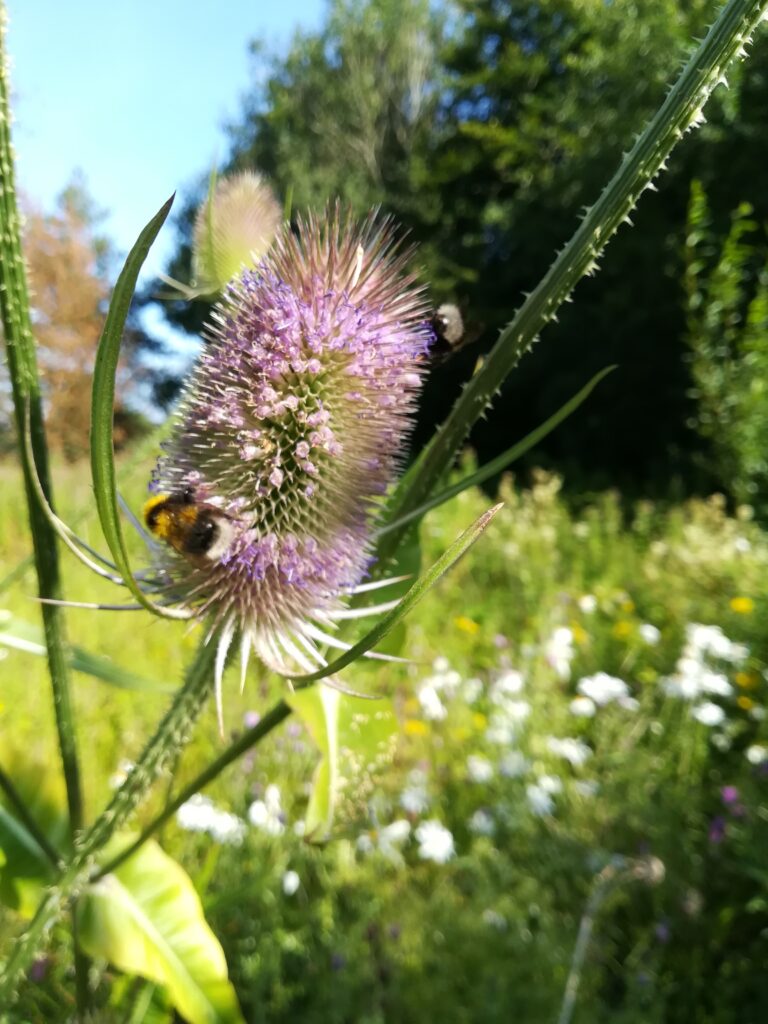
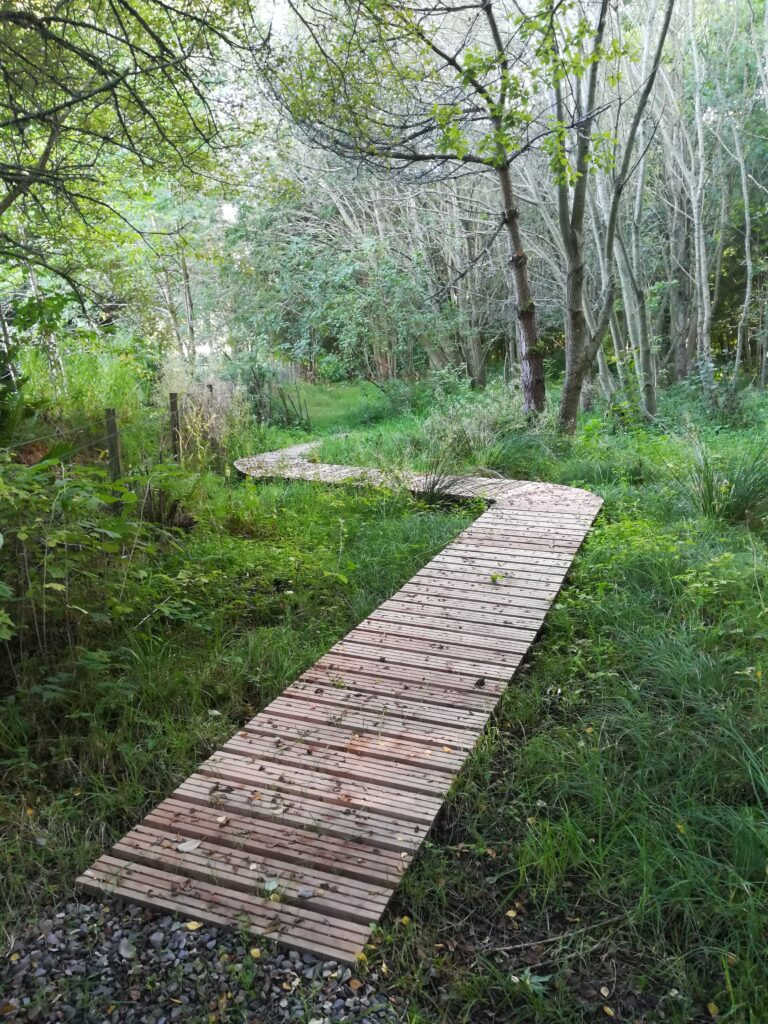
BOG GARDEN AND PONDS
The bog garden and ponds are on the eastern side of the plot in the woodland (Zone 4). The ground is naturally boggy and there are some springs here, and it probably also has some soakaway and run off from drains. We dug a pond in the natural clay, and planted with native pond and marginal plants such as iris, cuckoo flower, dokudami (Houttuynia cordata) hosta, hemp agrimony, meadowsweet, starwort, bog bean, willow moss and water avens, as well as rushes which were already growing. We have created a path and a boardwalk over the bog, and a little bridge over the burn which now runs down through the woodland. We hope this low impact approach will create habitat for dragonflies, newts, frogs, toads and other animals.
MEADOW
The meadow area is open grass lawn on the south slope away from the house down towards the woodland edge. It has a few established trees (Rowan, Blue Fir, Monkey Puzzle, Twisted Hazel) but nothing else. The design for this area was to keep it as grass but allow the grasses to grow longer so it would reduce the time spent mowing. We defined paths through the meadow which are mowed more regularly for the lawn clippings to be used in compost system. the longer meadow grass areas are scythed and mowed twice per year, with grass turned into hay or mulch, which is used to grow potatoes in then composted. There are wild marsh orchids, knapweed, yarrow, clover and grasses growing here. This area is also used as leisure space, with our firepit and seating area, and the yurt on the woodland margin of the meadow. Recently we have included a stumpery under the monkey puzzle with shade loving plants, and bulbs in the sunny meadow areas.
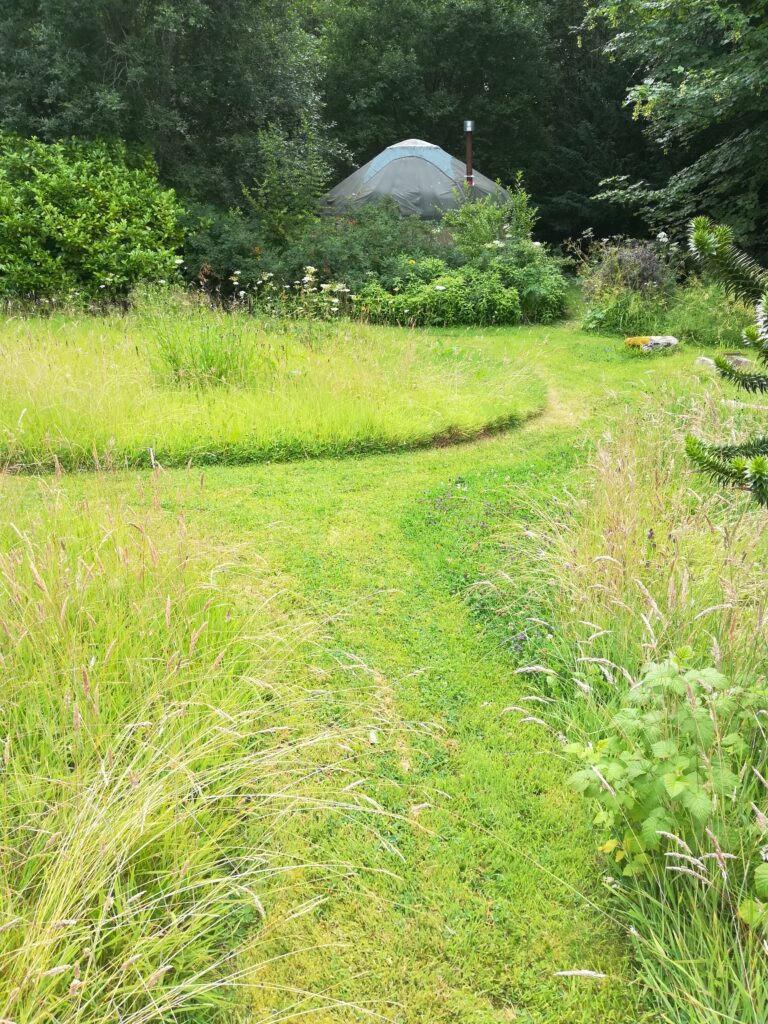
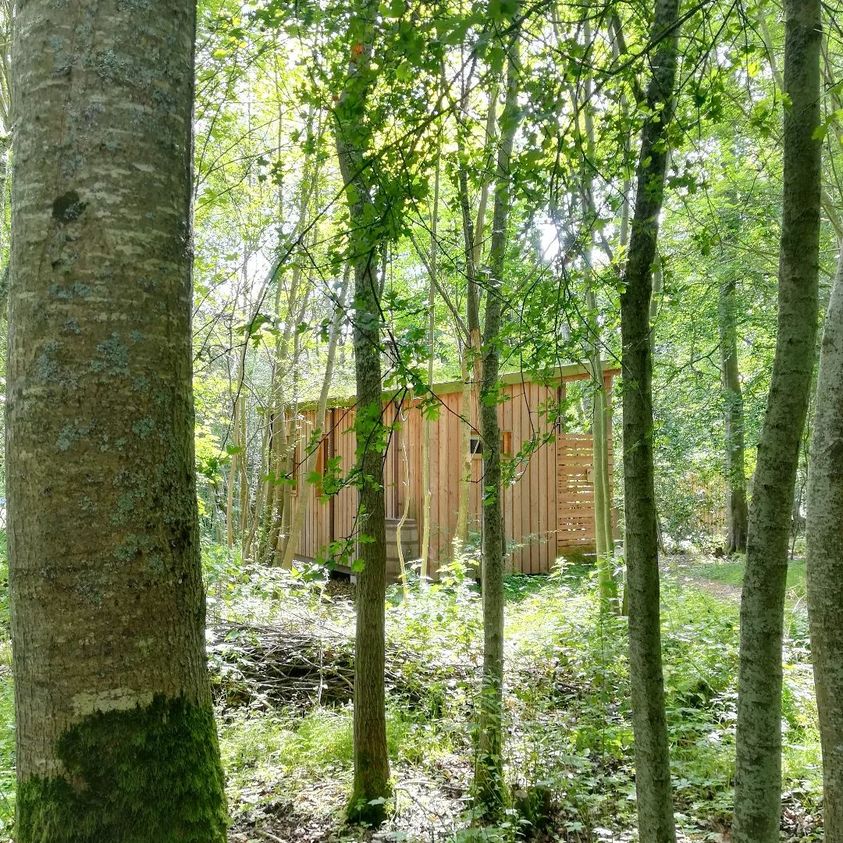
WOODLAND AND ECO CABINS
The established woodland takes up the southerly section of the garden, sloping down towards the road and the boundary fences. It has a mix of native deciduous trees and evergreens, such as beech, ash, alder, lime, willow, sycamore, pine, holly, hawthorn, yew and birch and plants such as bluebells, snowdrops, ferns, ribes, geulder rose, foxgloves, and brambles. There are a variety of habitats in the woodland, with dry, open glades, damp, mossy, boggy sections, and marginal edges with ferns and brambles. The design uses sensitive management of the woods to maintain healthy trees, biodiversity and habitat, with defined pathways created around the woods so that people don’t trample the plants and wildflowers. . We also incorporated the two eco cabins which have a low impact build so as not to disturb or remove any trees.
SYSTEMS AND CYCLES
As well as the areas of the site, the design is about creating closed loop systems and cycles, which are less visible but no less important. The Compost system uses all green and brown material produced onsite, the chickens manure and bedding and grass cuttings are harvested to build compost heaps. All food scraps and peelings (there is no ‘waste) are fed to wormeries which produce compost and liquid feed. the grass and meadows are managed through a cycle of mowing and scything, with the hay being used as mulch or growing medium for tatties, which gets composted after use. The harvesting and preserving of what we grow is another seasonal cycle which gives us a full pantry of frozen, canned, dried, pickled and fermented foods.

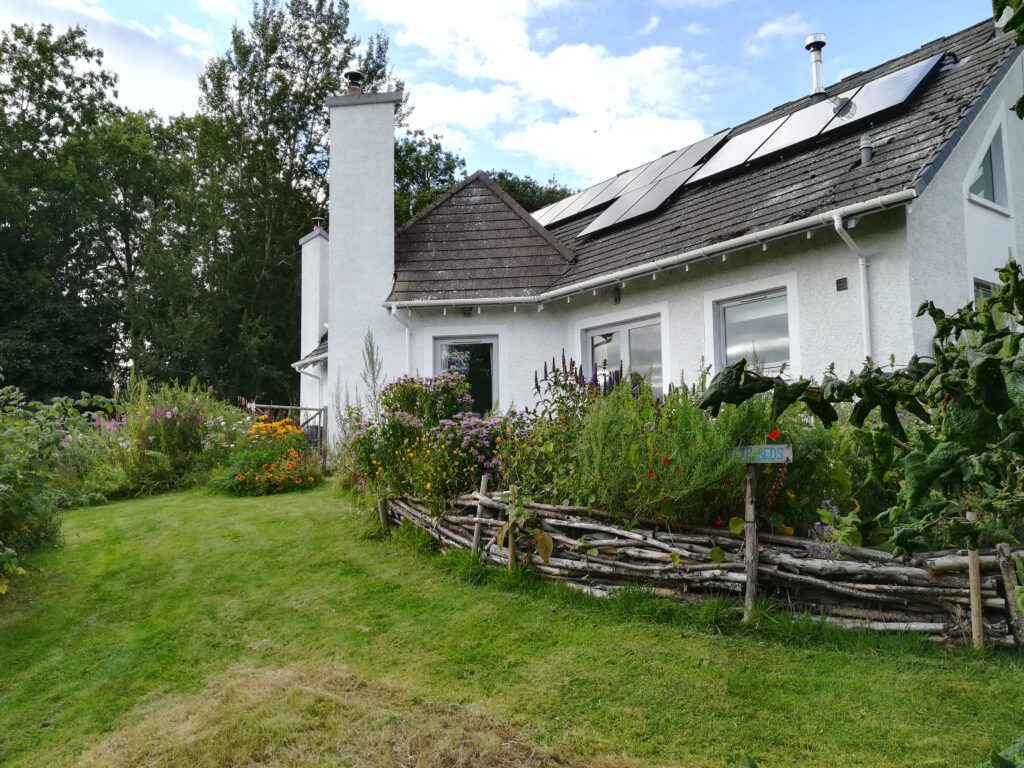
ECO HOUSE RETROFIT
We took the existing bungalow and designed an ‘Ugly House to Eco House’ retrofit! Solar Hot Water, Solar PV, Biomass, Energy efficiency, natural materials, floorings and paints, aesthetic design inspired by Japanese and Scandinavian styles, Arts & Crafts and Modernism, have all been utilised to make a comfortable and eco friendly house within the limitations of budget and existing structure.
ENERGY
We produce all our own firewood and kindling from our small woodland, as well as solar electricity! We try to reduce energy use by using hand tools and manual processes, but also looking for non fossil fuel options such as a recheargable battery lawn mower.
